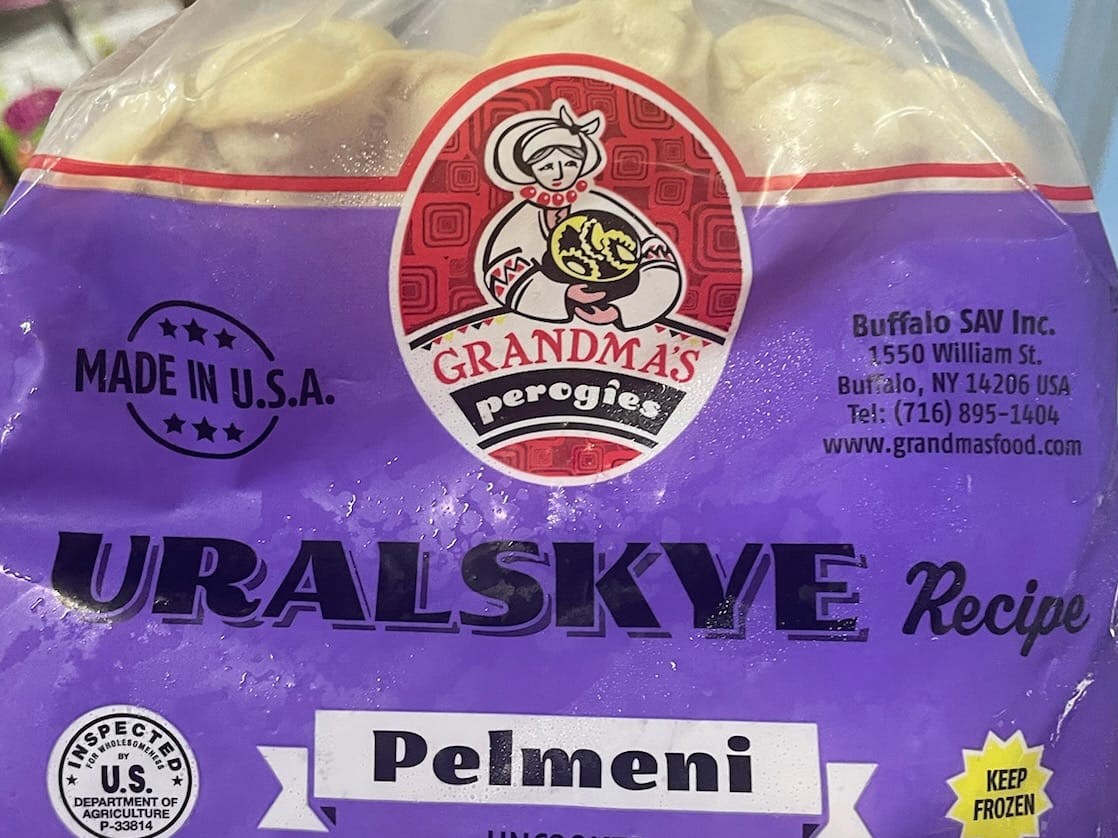Anyone with roots in Eastern Europe likely cherishes the memory of a childhood favorite: pelmeni, those delightful dumplings that transcend generations. A beloved staple for both kids and adults, pelmeni exude a certain enchantment when adorned with velvety sour cream and crisp bacon bits. They stand as a culinary beacon of comfort, offering sustenance for ages and gracing tables on any occasion. From the joyous process of crafting them to the blissful act of savoring each bite, pelmeni are more than a dish; they’re a cherished tradition. With variations found in every corner of Eastern Europe and beyond, delving into their true origins becomes a journey of discovery and a tribute to their enduring legacy. So what is Pelmeni you may ask? They are a type of traditional dumpling that originated in Russia. They are made from a simple mixture of minced meat (typically a combination of pork and beef) seasoned with salt and pepper, encased in a thin unleavened dough. These dumplings are then boiled and served with various accompaniments like sour cream, butter, or vinegar.
The Origins of Pelmeni
Dating back to the 13th century, during the era of the mighty Mongol Empire, pelmeni emerged as a culinary cornerstone born of necessity. In the unforgiving winters of Eastern Europe, where the biting cold and vast stretches of snow presented formidable challenges, a portable and hearty sustenance was a crucial need. It was in this harsh landscape that Siberian hunters, braving the wilderness in search of game, fashioned these delectable morsels. Crafted with care and ingenuity, pelmeni were not just a meal, but a lifeline, providing much-needed sustenance during their arduous expeditions.
As the years passed, pelmeni underwent a gradual transformation, evolving from a survivalist’s fare to a cherished cultural symbol. Passed down through generations, the art of pelmeni-making became an integral part of Russian culinary heritage. These dumplings, with their rustic simplicity and robust flavors, found a permanent place in the hearts and kitchens of families across the vast expanse of Russia. Their preparation became a revered tradition, often a communal affair, where the wisdom and techniques of crafting pelmeni were imparted from one generation to the next.
Through the ebb and flow of centuries, pelmeni endured, transcending its humble origins to become a culinary treasure. Each dumpling, lovingly folded and generously filled, carried with it the echoes of a time when survival depended on resourcefulness and culinary prowess. Today, pelmeni stand not only as a testament to the resilience of those who crafted them but as a celebration of the rich tapestry of Russian cuisine, reminding us of the enduring power of food to weave together culture, history, and the human spirit.
The Symphony of Flavors
In the heart of Eastern Europe, the soul of pelmeni finds its essence in the artful dance of ingredients. A harmonious fusion of minced pork and beef, delicately laced with the embrace of garlic and onions, gives birth to a filling that transcends mere sustenance. It is a marriage of comfort and sophistication, a symphony of flavors waiting to be unraveled within the confines of a tender, hand-rolled dough. Embarking on a culinary journey through the vast expanse of Eastern Europe, one encounters a tapestry of pelmeni variations, each a testament to the region’s unique culinary identity. In the rugged landscapes of Siberia, Siberian pelmeni reign supreme. Here, emphasis is placed on lean meats and uncomplicated seasonings, resulting in a robust and hearty offering. Their plump, inviting forms beckon, evoking a sense of warmth reminiscent of snow-clad vistas and crackling firesides. Traveling westward, we find ourselves in the heart of Russia, where pelmeni have become an indelible part of the culinary landscape. Russian pelmeni, small yet robust, boast a tantalizing blend of meats enlivened by a bouquet of aromatic spices. They embody a sense of nostalgia, conjuring images of winter wonderlands and the comforting embrace of familial kitchens. Venturing southward, into Ukraine, we encounter a subtle yet distinct variation of this beloved dish. Ukrainian pelmeni, though perhaps less omnipresent, stand as a testament to the region’s culinary versatility. Each region weaves its unique narrative into the fabric of these dumplings, offering variations in size, shape, and fillings that reflect the diverse landscapes and traditions that define Ukraine. Beyond the confines of Russia, Ukraine, and Siberia, pelmeni find their place in the Baltic countries as well. Lithuania, Latvia, and Estonia offer their own delightful takes on these dumplings, infusing them with regional nuances and local ingredients. In Lithuania, for instance, you may find cepelinai, a variation of pelmeni made from grated potatoes and stuffed with minced meat, creating a heartier, earthy rendition. Ultimately, pelmeni serve as a culinary bridge, connecting diverse cultures and landscapes through a shared love for the craft of dumpling-making. Each variation tells a story, weaving together the flavors, traditions, and histories of its region, and inviting us all to partake in this delicious journey across Eastern Europe and beyond.

A Culinary Duel: Pelmeni vs. Ravioli
In the longstanding culinary debate between pelmeni and ravioli, a significant question arises: which of these dumplings holds the claim to greater antiquity? Upon examination of culinary history, it is plausible that pelmeni, with their thin, delicate dough, have a lineage as ancient as the expansive Russian steppes and might even predate their Italian counterpart, ravioli.
The key distinction lies in the composition of the dough. Pelmeni feature a thinner casing, designed to allow the filling to be the focal point. This thin layer requires a high degree of precision and skill in the pelmeni-making process. In contrast, ravioli, originating from Italian cuisine, employ a heartier, more substantial dough. This denser casing, while still tender, complements and harmonizes with the typically rich fillings. In summary, the pivotal difference between pelmeni and ravioli lies in their dough composition. Pelmeni’s delicate casing emphasizes the prominence of the filling, delivering an unadulterated burst of flavor. On the other hand, ravioli’s sturdier exterior provides a contrasting texture, enhancing the overall dining experience. The choice of sauce significantly influences the culinary experience as well. With pelmeni, the most common accompaniments are sour cream and butter, which play a crucial role in enhancing their flavor profile. These sauces provide a creamy, luscious texture that complements the hearty, meaty filling of the dumplings. The tangy richness of sour cream adds a distinctively Russian touch, elevating the overall taste experience. Furthermore, the subtle nuttiness of butter lends a comforting, indulgent layer to the dish. On the other hand, ravioli, being an integral part of Italian cuisine, are traditionally paired with a wide variety of sauces, reflecting the regional diversity of Italy. Classic options include marinara, a tomato-based sauce with garlic and herbs, and Alfredo, a creamy, buttery concoction. These sauces serve to complement and enhance the flavors of the ravioli’s fillings, offering a diverse range of taste experiences. The key distinction lies in the flavor profiles of the sauces. Russian pelmeni sauces emphasize a creamy, tangy, and rich aspect, mirroring the robustness of the dumplings themselves. In contrast, Italian ravioli sauces provide a broader spectrum, ranging from the bright, acidic notes of tomato-based sauces to the decadent, velvety textures of cream-based options.
Simple recipe
Making pelmeni at home is a delightful culinary endeavor that promises to bring the flavors of Russia to your kitchen. To begin, prepare the dough by combining flour, water, and a pinch of salt. Knead the mixture until it forms a smooth, elastic ball, then cover and let it rest for about 30 minutes. In the meantime, prepare the filling by mixing minced pork and beef with finely chopped onions, garlic, salt, and pepper. Once the dough has rested, roll it out into a thin sheet and cut out small circles using a round cutter or a glass. Place a small spoonful of the meat mixture in the center of each circle. Fold the dough over, sealing the edges to form a semi-circular dumpling. To cook the pelmeni, bring a pot of salted water to a gentle boil. Carefully add the dumplings and let them cook until they float to the surface, indicating they are done. Using a slotted spoon, transfer them to a plate. Serve your homemade pelmeni hot, garnished with sour cream, melted butter, or a sprinkle of fresh herbs for a truly authentic experience that captures the heartwarming essence of Russian cuisine. Enjoy!






